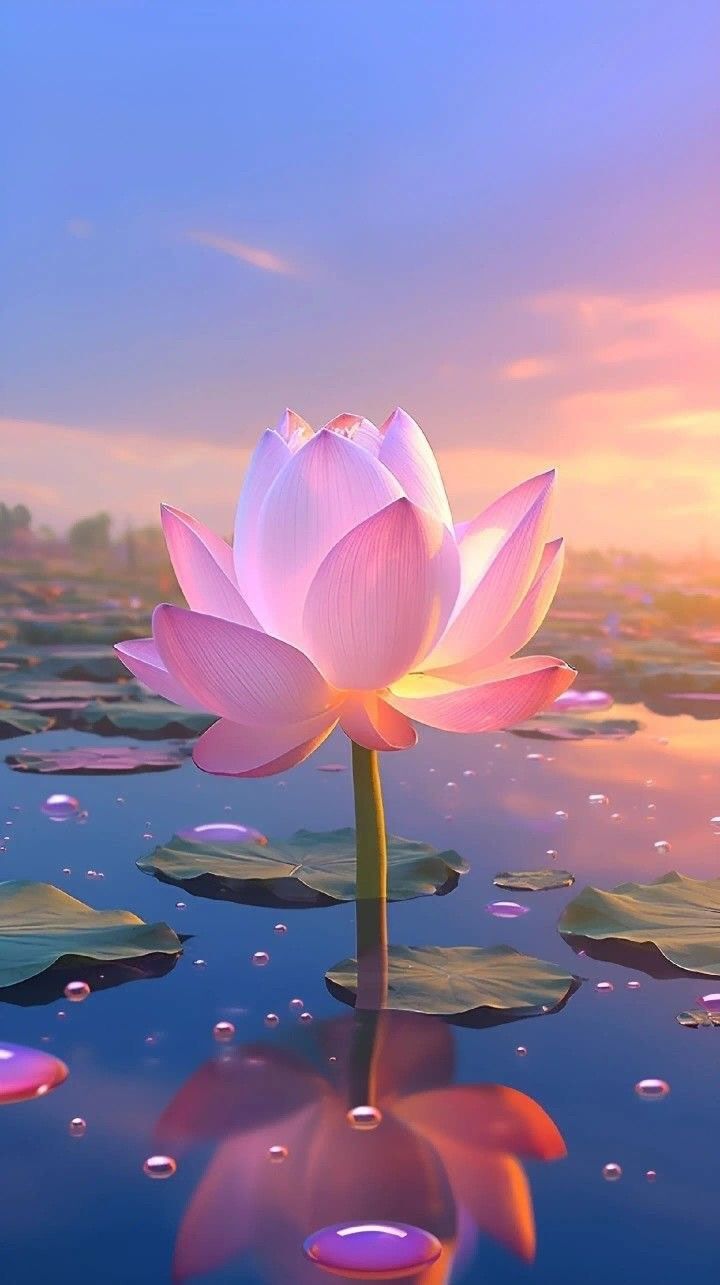10 Fascinating Facts About the National Flower of India – The Sacred Lotus
Introduction
National Flower of India: India, a land of rich heritage and natural beauty, is home to several national symbols that reflect its cultural ethos. Among them, the Lotus (Nelumbo nucifera) holds a special place as the National Flower of India. This beautiful aquatic flower is not only admired for its aesthetic appeal but also revered for its deep spiritual and cultural significance.
From its role in Indian mythology to its impact on daily life, the lotus is much more than just a flower—it symbolizes purity, resilience, and enlightenment. Let’s explore the fascinating aspects of India’s national flower in detail.
Biography of the Lotus: National Flower of India
- Scientific Name: Nelumbo nucifera
- Common Name: Lotus, Sacred Lotus, Kamal
- Type: Aquatic Perennial Flower
- Color: Primarily pink or white
- Habitat: Freshwater ponds, lakes, and rivers
- Native to: India and other parts of Asia
- Growth Cycle: Blooms during the monsoon and summer seasons
Historical and Cultural Significance: National Flower of India
The lotus has been a part of Indian history and spirituality for thousands of years. It is mentioned in ancient texts such as the Rigveda, Upanishads, and Puranas, symbolizing divine beauty and purity.
- In Hinduism, Goddess Lakshmi, the deity of wealth and prosperity, is often depicted sitting on a blooming lotus. Lord Vishnu and Lord Brahma are also associated with this sacred flower.
- In Buddhism, the lotus represents enlightenment, as it rises above muddy waters to bloom in pristine beauty.
- In Jainism, it is linked with the Tirthankaras, symbolizing their divine presence.
- In Indian Architecture, the lotus motif is commonly seen in temples, monuments, and even currency notes.
Daily Life Impacts of the Lotus: National Flower of India
The lotus is not just a flower of religious importance but also holds significance in daily life:
- Spiritual and Meditation Practices
- Many yoga and meditation techniques incorporate the “Padmasana” (Lotus Position) to enhance focus and inner peace.
- The flower is often used in pujas (prayers) and religious ceremonies.
- Culinary Uses
- Lotus seeds (known as Makhana) are highly nutritious and used in Indian cuisine, especially in sweets and snacks.
- The stem and root of the lotus plant are consumed as vegetables in many Indian states.
- Ayurvedic and Medicinal Benefits
- Lotus extracts are used in Ayurvedic medicine for treating skin ailments and promoting relaxation.
- The flower’s essence is believed to have anti-aging properties.
- Inspiration for Art and Literature
- The lotus has inspired poets, painters, and artisans for centuries.
- It is often depicted in classical Indian paintings, folk tales, and poetry as a metaphor for purity and beauty.
- Symbolism in Modern India
- The Indian national emblem (Ashoka Chakra) has a lotus at its base, signifying its deep-rooted connection with Indian values.
- Political parties and organizations use the lotus as a symbol of growth and purity.
Interesting Facts About the Lotus: National Flower of India
- The lotus can survive for over 1,000 years, with seeds capable of germinating even after centuries.
- The National Flag of India initially had a lotus symbol before it was replaced by the Ashoka Chakra.
- Unlike other flowers, lotus leaves repel water, keeping the flower clean despite growing in muddy ponds.
- It is considered a national flower in multiple countries, including India, Vietnam, and Egypt.
- The Brahma Kamal, often confused with the lotus, is a different flower that blooms at night.
Significance and Observance of the Lotus in Society: National Flower of India
- Religious Festivals: The lotus is widely used during Diwali, Durga Puja, and other Hindu festivals.
- National Pride: It represents India’s spiritual heritage and resilience.
- Lotus Awards: The Padma Awards (Padma Shri, Padma Bhushan, Padma Vibhushan) derive their name from the lotus, recognizing excellence in various fields.
FAQs About the National Flower of India
- Why is the lotus the national flower of India?
The lotus symbolizes purity, resilience, and spiritual enlightenment, aligning with India’s cultural and philosophical beliefs. - Where can we find lotuses in India?
Lotus flowers grow abundantly in lakes, ponds, and rivers across India, especially in states like Kerala, Tamil Nadu, and West Bengal. - Can I grow a lotus at home?
Yes! You can cultivate lotus plants in water-filled pots, containers, or backyard ponds. - Is the lotus used in medicine?
Absolutely! Ayurveda uses lotus extracts for skin care, digestion, and stress relief. - What does the lotus symbolize in different religions?
- Hinduism: Divine purity and prosperity
- Buddhism: Enlightenment and rebirth
- Jainism: Spiritual liberation
How to Wish Someone Using the Lotus Symbolism?
If you want to send good wishes inspired by the lotus, you can say:
- “May your life bloom like a lotus, untouched by negativity!”
- “Wishing you prosperity and peace, just like the divine lotus.”
Final Thoughts: National Flower of India
The lotus flower is not just a botanical wonder but a symbol of hope, purity, and resilience. It has stood the test of time, inspiring generations and remaining an integral part of India’s culture, spirituality, and daily life.
From its roots in the mud to its radiant bloom above the water, the lotus teaches us to rise above challenges and shine with inner strength. No wonder it is celebrated as India’s national flower!










